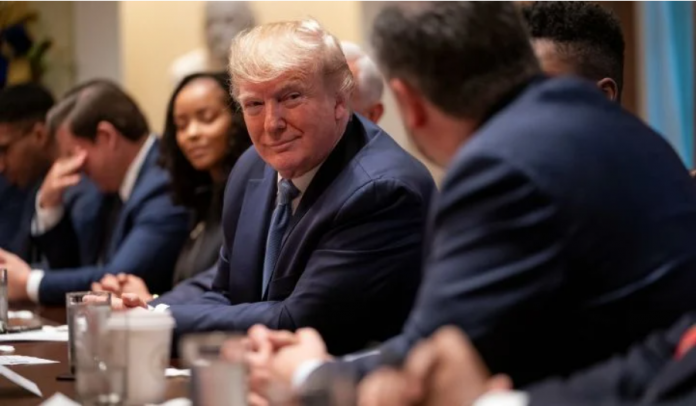The Trump administration will once again withdraw an exclusion it had previously granted to two-sided solar panels, after determining “the bifacial solar panel exclusion is undermining the objectives” of the Section 201 tariffs placed on solar cells and modules in January 2018. The U.S. Trade Representative published the withdrawal notice in the Federal Register on Friday.
The move would eliminate the uncertainty surrounding the exemption — which had been instituted, withdrawn and reestablished over the course of several months last year — but it’s sure to be met with opposition from some segments of the solar industry.
The exclusion for bifacial panels, one of two the U.S. Trade Representative (USTR) granted to the solar tariffs, set off a tussle within the solar industry when it was established in June 2019. Companies that had invested in U.S. manufacturing plants in the wake of the Section 201 tariffs, such as Hanwha Q Cells, and an original petitioner of the tariffs, Suniva, opposed the exclusion, arguing it helped internationally manufactured panels undercut domestically produced product. The vast majority of bifacial panels are made outside the U.S.
But the industry’s largest U.S. trade group, the Solar Energy Industries Association, has contended the exclusion provides vital support to a budding technology.
Just before the administration withdrew the bifacial exemption in October, developer Invenergy Renewables filed a legal challenge arguing that the USTR hadn’t allowed for proper comment or notice prior to the withdrawal. In December, the U.S. Court of International Trade sided with Invenergy, allowing the exclusion to stand. In January, the administration restarted the process by requesting comment on the future of the exclusion. The court must lift its injunction for the withdrawal to apply.
Though two-sided solar panels represent a small proportion of those used in U.S. solar installations to date, they are quickly becoming the norm for some developers. BP-backed solar developer Lightsource, for instance, has used the technology in all its projects since mid-2019. By 2022, IHS Markit forecasts bifacial modules will make up one-third of worldwide production.
In the shorter term, SEIA told Greentech Media, the industry viewed the exclusion as a means to cope with an “acute shortage” of domestic panels available to U.S. utility-scale projects.
“Throughout this process, the solar industry has sought to find a middle-ground solution that addressed this shortage in a way that did not undermine the objectives of the underlying Section 201 safeguard measure,” said John Smirnow, general counsel and vice president of market strategy at the trade group, in an emailed statement.
But the USTR suggested the exemption could provide undue momentum for the technology as it’s already growing in popularity.
“Bifacial panels are projected to gain a large share of total demand in the coming years due to their power-generation advantages and relative cost-competitiveness with monofacial panels — particularly the price advantage that the bifacial exclusion conferred upon them,” states the USTR order. “Accordingly…the bifacial exclusion (a) likely will result in substantial increases in imports of bifacial panels, and (b) that these products likely will compete with domestically produced solar products in the U.S. market.”
The administration also argued the exclusion disincentivized domestic production of bifacial solar panels. In the wake of the Section 201 tariffs, companies opened up five module manufacturing facilities in the U.S., amounting to 3 gigawatts of capacity. None of the facilities produce bifacial panels on a significant scale.
SEIA said Friday it would continue to pursue litigation related to the exclusion. If additional legal challenges follow, the fight over the exclusion could last as long as the tariffs themselves, which are currently slated to end in 2022. In February, the U.S. International Trade Commission sent a midterm review of the tariffs’ impact to the president. It’s now up to Trump to decide whether to modify the duties.






